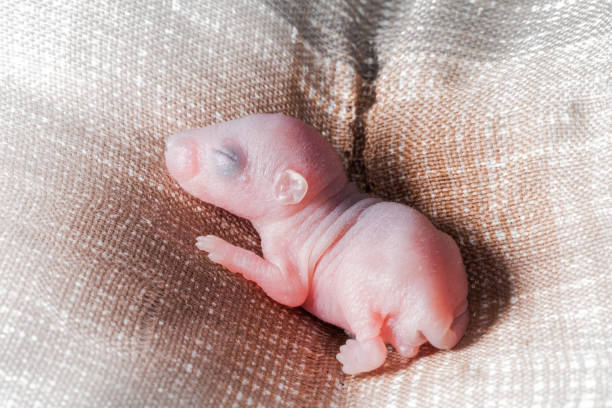It’s not uncommon to come across a baby possum in your backyard, garden, or even inside your roof. These tiny, vulnerable creatures are often separated from their mothers due to accidents, predator attacks, or falls from trees. While your first instinct might be to help, it’s important to approach the situation calmly and correctly. Understanding what to do next can make all the difference to the possum’s survival. Whether you’ve come across an orphaned joey or found one near your home, understanding the right steps to take is essential. Seeking expert help for possum removal in Melbourne ensures the baby possum is handled safely and legally, protecting both the animal and your property.
Spotting a Baby Possum: What to Look For
A baby possum may not always be easy to identify, especially if it’s curled up or hiding. Most commonly, they are ringtail or brushtail species — two of Australia’s most widespread native possums.
A young ringtail possum is small, grey-brown, and has a white belly and a curled tail. Brushtail possums are generally larger, with a bushier tail and a more solid body. A baby brushtail can still appear quite small, especially if it’s recently out of the pouch.
You might find a baby possum clinging to its deceased mother, hiding under bushes, or wandering in your yard looking for warmth and shelter. If you hear high-pitched squeaks or find one in an exposed area during daylight hours, it’s likely in distress and needs help.
What to Do Immediately
If the baby possum appears healthy — alert, moving, and not visibly injured — your first priority is to ensure it’s kept safe from predators like dogs or cats.
Place the possum gently into a small box lined with a towel or cloth. Use gloves or a towel to handle the animal to avoid stress or injury. Keep the box in a dark, quiet, and warm area until you can seek expert advice.
Never attempt to feed it or give it water, as improper feeding can cause serious harm. These animals have very specific dietary needs, especially at a young age.
Avoid delaying action. Even if the possum looks fine, young animals can quickly decline without proper care or warmth.
Contact a Wildlife Rescue Service
Once the baby possum is secure, the next step is to contact a wildlife rescue organisation, vet, or licensed carer. In Victoria, you can call Wildlife Victoria or take the possum to the nearest vet, who will then pass it on to trained carers.
Do not try to raise or care for the possum yourself. In most Australian states, including Victoria, it is illegal to keep native wildlife without a licence — even if your intentions are good.
Wildlife professionals will assess the possum’s health, determine its age, and provide the necessary care until it can be released back into the wild. The sooner they get the animal, the better its chances of survival.
What If the Possum Is Injured or Unresponsive?
If the baby possum appears injured — showing signs of bleeding, limping, or lethargy — extra caution is needed. Wrap it gently in a towel and place it in a secure box with air holes.
Keep it warm by placing a hot water bottle (wrapped in a cloth) in the box, but make sure the possum can move away from the heat if needed. Avoid bright lights and noise, and do not attempt to treat the injuries yourself.
In these cases, get in touch with a vet or wildlife rescue service immediately. Time is critical, and professionals are equipped to stabilise and treat injuries that would otherwise be fatal.
Understanding the Role of Human Activity
Sometimes, people discover baby possums after disturbing a roof cavity, trimming trees, or clearing brush. These human activities — while unintentional — can separate young possums from their mothers or expose their hiding spots.
Roof maintenance and home renovations are particularly common causes of separation. That’s why ethical possum removal involves checking for young before sealing entry points or removing adult possums.
Professionals trained in humane wildlife control will inspect the area thoroughly to ensure no young are left behind, avoiding both unnecessary harm and future issues from trapped animals.
Preventing Future Possum Encounters
If you’ve found a baby possum once, chances are your property is attractive to adult possums — either for food, shelter, or both.
To reduce the chance of future encounters:
- Trim overhanging branches to limit roof access
- Secure rubbish bins and remove pet food left outdoors
- Install possum boxes in nearby trees to offer an alternative nesting site
- Seal roof gaps and vents only after confirming no animals remain inside
The goal isn’t to harm or exclude possums entirely but to manage their presence humanely. Understanding the possum control cost in Melbourne also includes factoring in the potential for damage, repeated visits, and the legal need for ethical handling.
Call for Professional Help When Needed
Whether you’ve found a baby possum or suspect adult possums in your roof, the safest option is to call in experts. Possums are protected wildlife in Australia, and dealing with them improperly can lead to legal trouble and harm to the animals.
Possum Removal Melbourne offers humane, licensed services tailored to your property and situation. From safe inspections to identifying hidden nests, we ensure possums are relocated and kept out — the right way.
Call 03 9021 3762 today to discuss your situation or request an assessment. Helping one baby possum might seem small, but it’s a step towards protecting both wildlife and your home.




